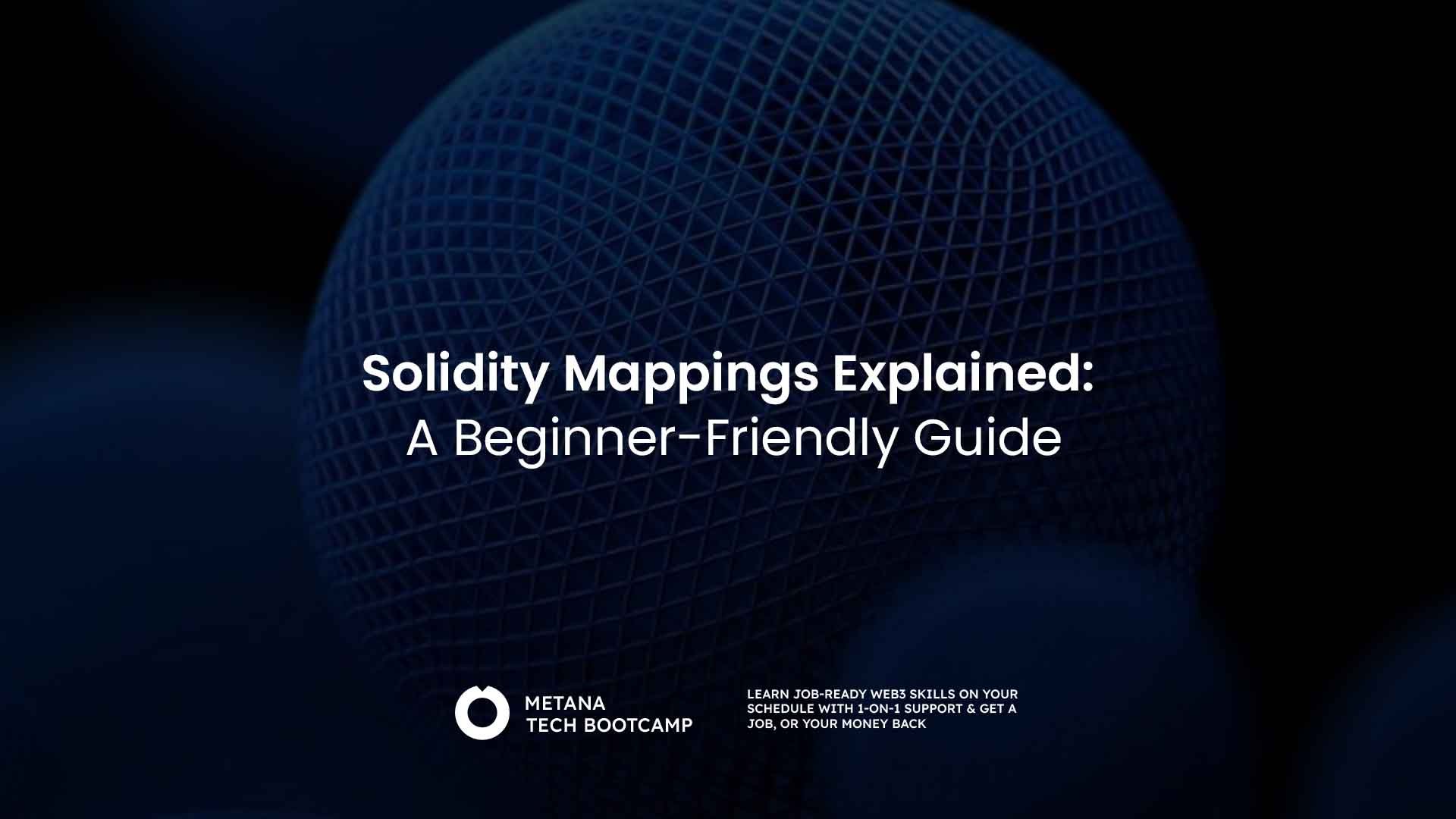TL;DR
Mappings in Solidity are key-value stores that offer fast lookups and efficient storage but lack iteration capabilities. They are ideal for storing balances, permissions, and relationships between addresses. Use mappings carefully, avoid unnecessary data storage, and be mindful of access control to optimize gas costs and security in smart contracts.
What is a Mapping in Solidity?

A mapping in Solidity is a key-value store that allows developers to associate unique keys with specific values. It functions similarly to a dictionary or a hash table in other programming languages.
Think of a mapping like a real-world address book, where a name (key) maps to a phone number (value). In Solidity, mappings are widely used for storing user balances, access control settings, and references to complex data structures.
Syntax of Mappings in Solidity
Mappings in Solidity are defined using the following syntax:
mapping(keyType => valueType) <visibility> <name>;
keyType– The data type of the key (e.g.,address,uint,bytes32).valueType– The data type of the value (e.g.,uint,bool,struct).visibility– Access specifier (public,internal,private).name– The identifier of the mapping.
Example:
mapping(address => uint) public balances;
This creates a public mapping where Ethereum addresses (address) are linked to unsigned integers (uint) representing balances.
How to Use Mappings in Solidity
Solidity Mappings are essential for managing data storage efficiently in smart contracts. Here’s how you can use them:
1. Storing and Retrieving Data
A mapping allows direct storage and retrieval of values:
pragma solidity ^0.8.0;
contract SimpleBank {
mapping(address => uint) public balances;
function deposit() public payable {
balances[msg.sender] += msg.value;
}
function withdraw(uint amount) public {
require(balances[msg.sender] >= amount, "Insufficient balance");
balances[msg.sender] -= amount;
payable(msg.sender).transfer(amount);
}
function getBalance() public view returns (uint) {
return balances[msg.sender];
}
}
2. Nested Mappings
Mappings can also be nested to create more complex data structures:
mapping(address => mapping(address => uint)) public allowances;
This allows tracking of approvals where one address (owner) authorizes another address (spender) to use a certain amount of tokens.
Best Practices and Mistakes to Avoid with Mappings
| Best Practices | Common Mistakes |
|---|---|
| Use for Fast Lookups: Mappings provide quick access to values based on unique keys. | Avoid Iteration: Mappings don’t support looping through stored keys. |
| Initialize Properly: Ensure mappings are set up correctly within the contract. | Don’t Declare in Memory: Mappings can only be used in storage, not memory. |
| Manage Access Control: Use mappings to assign roles and permissions efficiently. | Watch Storage Costs: Unnecessary data storage in mappings can lead to higher gas fees. |
| Combine with Structs: Mappings work well when paired with structs to store complex data. | Be Cautious with Public Visibility: Exposing mappings publicly may leak sensitive data. |
Additional Considerations
Mappings vs Arrays
- Use mappings when looking up data via a unique key.
- Use arrays when ordering and iteration are required.
Use Cases for Mappings
- Token Balances: Tracking ERC-20 token balances per address.
- Voting Systems: Storing voter choices in decentralized applications.
- Access Control: Managing user roles and permissions.
- Escrow Contracts: Handling deposits and transactions in smart contracts.
Mappings are a fundamental storage structure in Solidity, offering fast lookups and efficient storage. However, they come with limitations, such as the inability to iterate over keys. By following best practices and avoiding common pitfalls, developers can leverage mappings to create secure, efficient, and optimized smart contracts.
FAQs
What is a mapping in Solidity?
- A mapping is a key-value storage system that allows quick lookups of values using unique keys, commonly used for tracking balances, permissions, and relationships between addresses.
Can I iterate over a mapping?
- No, mappings do not support iteration because Solidity does not store keys in an iterable way. You need an additional array to track keys.
Can mappings be used in memory?
- No, mappings can only be used in contract storage. They cannot be declared in memory or passed as function parameters.
Are mappings more efficient than arrays?
- Yes, mappings allow constant-time lookups, making them more efficient than arrays when searching for specific values.
Can I delete an entry in a mapping?
- Yes, but only by setting the value to its default (e.g.,
0foruint). Mappings do not have a built-in delete function.








